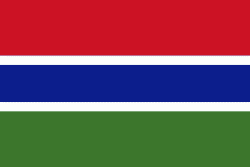Suduwol (Sudowol)
Suduwol is a village in Upper River Division, Gambia. It is a Soninke-speaking village with a population of approximately 3780. The village is made of seven tributes (Tunkara, Jaguraga, Sillah, Nimaga, Trawally, Sinera and Kanteh, and minority tribes including sawaneh and samura kunda, Kaira kunda, Danjo, Dambelly, ). It is currently ruled by the Tunkara tribe which holds positions such as Head of the city (Degumee) and Imam. ( Jaguraga kunda holds all other leadership positions. This was the agreement of the founders of the village according to oral historians )
The current head of the city is Alhagie Maju Tunkara (Nov-2018). The Tunkaras in Gambia are all Soninke people. They live throughout West Africa and many immigrated to Europe.
Suduwol is home to A primary and a secondary school. Recently a high school has been established.The village also have Islamic school known as Madrasa.
Very important figures of suduwol include Ex-Chief of Kantora! ALH YUKASSE TUNKARA, Billay G Tunkara current MP of Kantora, Alhagie Kibily Jaguraga, Mpa Masa, Alhagie Billay Tunkara, Alh. Ebrima (current Imam) his son Dembo Touray Tunkara who currently lead people in prayers because the father old age. etc.
The Soninke, also called Saraculeh or Serahuli, are a Mande people who descend from the Bafour and closely related to the Imraguen of Mauritania. They speak Soninke, a mande language. They were the founders of the ancient empire of Ghana, 750-1240 CE. Subgroups of Soninke include the Maraka and Wangara. After contact with Muslim Almoravid traders from the north around 1066, Soninke nobles of neighboring Takrur were among the first ethnic groups from Africa to embrace Islam. When the Ghana empire dispersed, the resulting diaspora brought Soninkes to Mali, Senegal, Mauritania, Gambia and Guinea-Bissau. This diaspora included Wangara, famous traders who spread far from traditionally Mande areas. Hence the term Wangara is used today in Ghana and Burkina Faso to describe the Soninke populations in cities and towns.
The original text was written by; Bakumba Tunkara of Suduwol in 2010.
The Suduwol consumer a variety of foods. Breakfast foods include “Honde”, porridge made of millet, sugar, milk and salt and “Sombi” porridge made of rice, millet or corn. For lunch “Demmu Teray” and “Takhahay” are very common, both containing rice and peanuts, common Soninke ingredients. "Deray”, a stew, is a mixture of millet and beans.
The current head of the city is Alhagie Maju Tunkara (Nov-2018). The Tunkaras in Gambia are all Soninke people. They live throughout West Africa and many immigrated to Europe.
Suduwol is home to A primary and a secondary school. Recently a high school has been established.The village also have Islamic school known as Madrasa.
Very important figures of suduwol include Ex-Chief of Kantora! ALH YUKASSE TUNKARA, Billay G Tunkara current MP of Kantora, Alhagie Kibily Jaguraga, Mpa Masa, Alhagie Billay Tunkara, Alh. Ebrima (current Imam) his son Dembo Touray Tunkara who currently lead people in prayers because the father old age. etc.
The Soninke, also called Saraculeh or Serahuli, are a Mande people who descend from the Bafour and closely related to the Imraguen of Mauritania. They speak Soninke, a mande language. They were the founders of the ancient empire of Ghana, 750-1240 CE. Subgroups of Soninke include the Maraka and Wangara. After contact with Muslim Almoravid traders from the north around 1066, Soninke nobles of neighboring Takrur were among the first ethnic groups from Africa to embrace Islam. When the Ghana empire dispersed, the resulting diaspora brought Soninkes to Mali, Senegal, Mauritania, Gambia and Guinea-Bissau. This diaspora included Wangara, famous traders who spread far from traditionally Mande areas. Hence the term Wangara is used today in Ghana and Burkina Faso to describe the Soninke populations in cities and towns.
The original text was written by; Bakumba Tunkara of Suduwol in 2010.
The Suduwol consumer a variety of foods. Breakfast foods include “Honde”, porridge made of millet, sugar, milk and salt and “Sombi” porridge made of rice, millet or corn. For lunch “Demmu Teray” and “Takhahay” are very common, both containing rice and peanuts, common Soninke ingredients. "Deray”, a stew, is a mixture of millet and beans.
Map - Suduwol (Sudowol)
Map
Country - The_Gambia
 |
 |
The Portuguese in 1455 entered the Gambian region, the first Europeans to do so, but never established important trade there. In 1765, the Gambia was made a part of the British Empire by establishment of the Gambia. In 1965, the Gambia gained independence under the leadership of Dawda Jawara, who ruled until Yahya Jammeh seized power in a bloodless 1994 coup. Adama Barrow became the Gambia's third president in January 2017, after defeating Jammeh in the December 2016 elections. Jammeh initially accepted the results, before refusing to leave office, triggering a constitutional crisis and military intervention by the Economic Community of West African States that resulted in his removal two days after his term was initially scheduled to end.
Currency / Language
| ISO | Currency | Symbol | Significant figures |
|---|---|---|---|
| GMD | Gambian dalasi | D | 2 |
| ISO | Language |
|---|---|
| EN | English language |
| WO | Wolof language |















